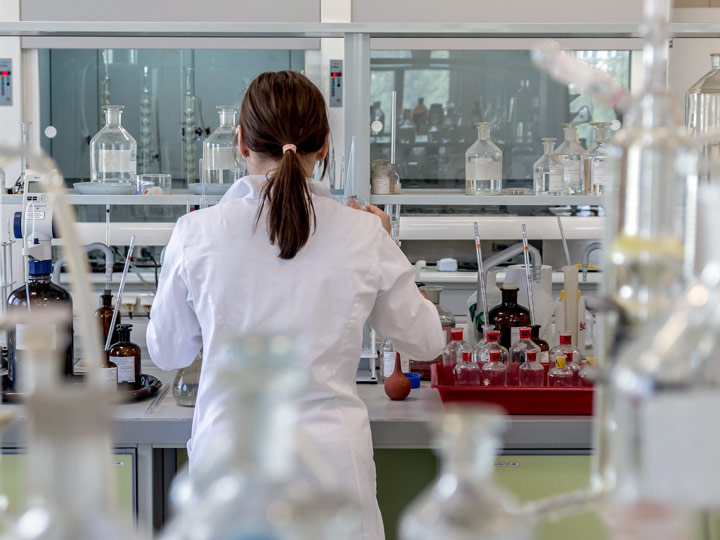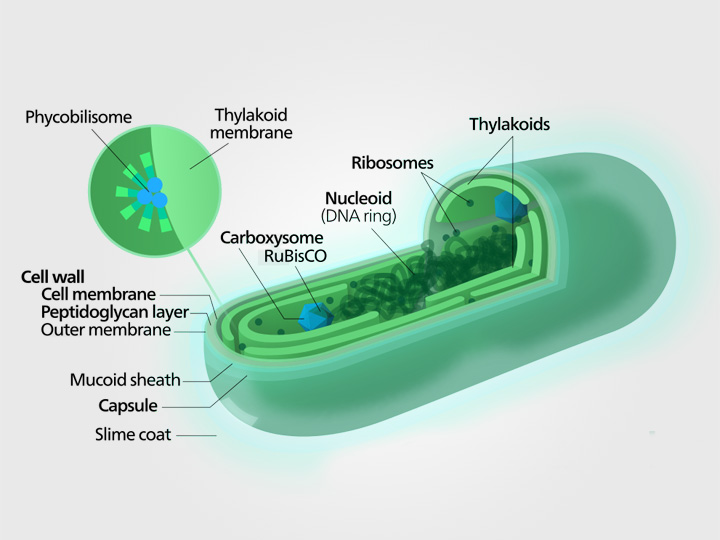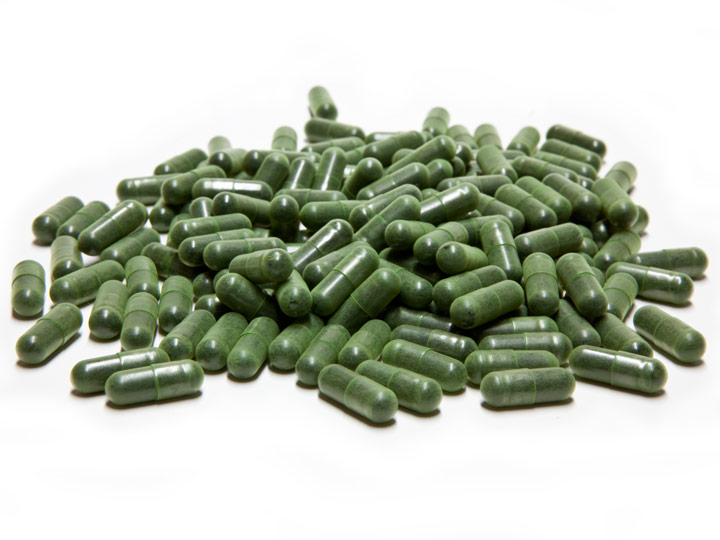Starting in the early 1970s, the Academy of Sciences and the Ministry of Nutrition in the former Soviet Russia (USSR) invested more than 1,000 person-years and millions of dollars in research and development to create Bio-Algae concentrates (BAC) that would hold extraordinary nutritional properties.
Consisting of blends of the four best algae among over 35,000 available on earth, these concentrates were developed, tested, proven and have now been used for agricultural and human applications for more than 15 years. This research project was led by Michael Kiriac. He had dedicated his life to finding natural solutions for human and animal health.
Chernobyl Nuclear Disaster
On April 26th, 1986, the Chernobyl nuclear reactor exploded, creating chaos, extreme pain and suffering. This encouraged major advances in the human application of BAC. The disaster became a major event in the life of Mr. Kiriac and his family, and of course for the USSR at large. War measures were put in place for all of Russia after the explosion and were maintained for many months following.
Dr. Kiriac and his family lived 500 km (about 300 miles) from the epicentre of the explosion and were subject to radiation, directly as well as via local food and water. So were all the animals.
When disaster struck at Chernobyl, Ukraine, not only was the region around the reactor affected, but the neighboring state of Belarus received 70% of the radioactive fallout and 23% of its territory became contaminated. Over 160,000 children and 146,000 cleanup workers were the victim of radiation poisoning resulting in birth defects, leukemia, cancer, thyroid disease, degeneration of spinal fluids, liver and bone marrow disease, as well as anemia, loss of vision and appetite, and a severely compromised immune system.
Mr. Kiriac was assigned to working closely with the medical sectors to assist with the treatment of the victims of the radio-active outburst. Because of his previous success with various cancers, he was asked to work with the Health Ministry of Ukraine to distribute BAC to hundreds of children and adults suffering from radiation disease.
Mr. Kiriac very closely monitored various health improvements:
- Leukemia, dangerously low white blood cell counts, improved in 20 days, leading to rapid improvements in the health of treated children compared to others who did not receive the algae.
- Regeneration of bone marrow, spinal fluids, blood and liver.
- Reduction in children’s urine radioactivity levels by 50% in only 20 days, when administered five grams per day at the Minsk Institute of Radiation Medicine.
- Many other aspects of recovery of health were observed.
Amazingly, there was restoration to health even when children were so affected that their eyeballs where bulging out of their sockets. In addition, the healing occurred during continuing radiation as well as while consuming contaminated food and water. Today, Mr. Kiriac remarks: “It is important to note that the Chernobyl disaster is still ongoing. Even though the exploded reactor is “sealed” in concrete, radiation continues to escape into not only the local atmosphere, but due to winds into the world atmosphere as well.”
North American Validation
From 1999 to 2000, while working with the research department of the Montreal McGill University, Mr. Kiriac was able to reproduce the poultry productivity results achieved in the U.S.S.R. Working with two tests groups of 13,000 chickens each, the group with BAC added to their grain demonstrated the expected results over the control group not fed BAC: larger eggs, stronger shells, longer egg-laying period, more eggs per month and no diseases. This test was performed twice for accuracy. During the 2000 Winter Games held in St. Petersburg Russia, BAC was compared with two other supplements – a Ginseng and a Chinese herb. It was reported as best by the Russian hockey team for: general pain reduction, particularly knee pains as well as faster and better recuperation of energy and blood oxidation after games.
Igor Kravcuk and Pavel Bure, team members and NHL players, who sponsored the test and brought BAC to the team in Russia, reported these successes to Mr. Kiriac in Montreal. For the next two years, additional research was performed by independent researchers at a Medical Research University in Quebec City, this time concerning the effect of BAC on prostate cancer and leukemia. The results showed that BAC was highly efficient when taken frequently in small quantities during the day acting as a trigger for the body’s self-healing power.
Other Algae Research
- Human Studies Confirms Spirulina’s Role As An Anti-Cancer Agent – Department of Immunology, Osaka Medical Center for Cancer and Cardiovascular Diseases, Higashinari-ku, Osaka 537-8511, Japan
- Immunostimulating activity of lipopolysaccharides from blue-green algae. by L. Besednova, et al. 1979. Pub. in Zhurnal Mikrobiologii, Epidemiologii, Immunobiologii, 56(12) pp 75-79. Russia.
- Terao, J. Antioxidant activity of beta-carotene-related carotenoids in solution. Lipids, 24: 659-661., 1989
- Torrissen, O.J., R.W. Hardy, and K.D. Shearer. Pigmentation of salmonids carotenoid deposition and metabolism. CRC Crit. Rev. Aquat. Sci., 1: 209-225., 1989
- Miki, W. (1991) Biological functions and activities of animal carotenoids. Pure Appl. Chem., 63(1):141-146.
- Inhibitive effect and mechanism of polysaccharide of spirulina on transplanted tumor cells in mice. by Lisheng, et al. 1991.Pub. In Marine Sciences, Qingdao, N.5. pp 33-38. China.
- Palozza, P. and Krinsky, N. I. Astaxanthin and astaxanthin are potent antioxidants in a membrane model. Arch. Biochem. Biophys., 297:291-295., 1992
- Study on effect and mechanism of polysaccharides of spirulina on body immune function improvement. by G. Baojiang, et al. South China Normal Univ. China. Pub. in Proc. of Second Asia Pacific Conf. on Algal Biotech. Univ. of Malaysia. pp 33-38. April 1994 China.
- Enhancement of antibody production in mice by dietary spirulina. by Hayashi, et al. Kagawa Nutrition Univ. Japan. Pub. in Journal of Nutr. Science and Vitaminology. Japan., June 1994
- Immune enhancement potential of spirulina in chickens. by M. Quereshi, et al. Poultry Science Assoc. Department of Poultry Science, North Carolina State, NC. Pub. in Journal of Poultry Science Vol 73, S.1. p. 46. USA., August 1994
- Britton, G., S. Liaaen-Jensen, and H. Pfander. Carotenoids today and challenges for the future. In: Britton, G., S. Liaaen-Jensen, and H. Pfander [eds], Carotenoids vol. 1A: Isolation and Analysis. Basel: Birkhäuser., 1995
- Lawlor, S. M. and O’Brien, N. M. Astaxanthin : antioxidant effects in chicken embryo fibroblasts. Nutr. Res., 15:1695-1704., 1995
- Torrissen, O. J. and Christiansen, R. Requirements for carotenoids in fish diets. J. Appl. Ichthyol., 11:225-230., 1995
- Immunomodulary effects of spirulina supplementation in chickens. by M. Qureshi, et al. North Carolina State. Pub. in Proc. of 44th Western Poultry Disease Conference, pp 117-120. USA., May 1995
Research and Publications
- Gulea A., Rudic A., Kiriac M., “Optimization of the nutrient composition for algae,” Moldova, 1987
- Gulea A., Kiriac M., “Optimization for obtaining fluoride rich algae,” Moldova 1987
- Kiriac M., “Optimization of algae bio concentrates for rich carotene content,” Moldova 1987
- Kiriac M., “The effects and benefits of BAC,” 2000, Canada
- Kiriac M., “How does BAC work?,” 2001, Montreal, Canada
- Kiriac M., “Invention of Technology for development of BioAlgae Concentrates” – Patent 1080/1-92 0880-3, Moscow, URSS, 1989
- Kiriac M., Gulea A., Rudic A., “Optimization of algae bio concentrates for rich B12 content,”
- Kiriac M., Kiriac L., “Invention of BioAlgae Concentrates,” 2000 Montreal, Canada
- Kiriac M., Kiriac L., “BioAlgae Concentrates – What is it exactly?” 2001, Canada
- Kiriac M., Kiriac L., “An indispensable ally,” 2000 Canada
- Kiriac M., “BioPreparation® – Invention for use in industrial animal feeds”, Montreal, 2002
- Kiriac M, “Algae production within industrial model in Moldova.” Republican conference on preparation of BioAlgae Concentrates for the food industry and on valuating the scientific research – Kishinev 1987 – R.S.S. Moldova
- Kiriac M., “Feeding poultry algae” – Moldova Agriculture Revue – 1987
- Kiriac M., Scutaru I., “Methods of utilizing algae for feeding chicken in the poultry industry” – Agriculture Revue – Moscow 1987
- Kiriac M., Rudic A., Scutaru I., “Benefits of algae feeds for the food industry” – Moldova Nutrition Revue – 1988
- Kiriac M., Rudic A., “Algae Growing Installation – Patent MD No.73, 1704712, 1989
- Kiriac M., Scutaru I., “Integration of Spirulina concentrates in the nutrition industry – National conference materials for microbiology and the algae sciences” – Tashkent, Usbekistan 1990
- Kiriac M., Sandu O., “Directed synthesis of algae and invention of BioAlgae Concentrates” – Isdatelistvo, Moscow 1991
- Thomas, R., Kiriac, M. – The Magic of BioAlgae Concentrates: The Life of Michael Kiriac – Publisher: CompWellness Org. – Pub. USA – Jan 2003
References
- McCoy, M. Astaxanthin market a hard one to crack. Chem.& Eng. News, 77: 15-17., 1999
- Miller, J.B., Wolever, T.M.S., Colagiuri, S. and Powell, K.: The Glucose Revolution, Publishers Group West, 1996
- Williams, R.: Biochemical Individuality – 1956, University of Texas Press
- Loomis, H. F.: Enzymes, The Key to Health – 21st Century Nutrition Publishing, 1999
- Nutritional aspects of Spirulina – Antenna – Jacques Falquet, 1996
- Grow your own Spirulina – Antenna – J. P. Jourdan, 1999
- Moldova Person of The year (Michael Kiriac) – Moldova Television, Documentary 1987-Extracts from Documentary 2002
Awards
- Nominated Moldova Person of the year: In 1987, Mr. Kiriac was nominated the person of the year in his country of Moldova for his altruistic support of the Chernobyl crisis and for the resounding achievement and successes at the most economically important poultry center with its financial return for Moldova. A 1:50 minute’s documentary film was made for the occasion and introduced on national television by Mr. Ciubuk the then Prime Minister of Moldova and his Minister of Finance.
- Gold Medal – New Technology for Algae Production – asi, Romania – This innovation was applied in the largest poultry farms of Moldova and was recognized at the International Exhibition For Research In Industrial Invention, 1994
- Silver Medal – Element of Protein Synthesis – Pittsburgh USA – This innovation was well received and recognized during the Show Management Index sm IX., 1995
- Gold Medal & Special Award – Earth Ecology – (Brussels, Belgium 1995) Industrial Use of Poultry Waste (Droppings) – Invention honored and recognized during the International Eureka Show, granted by deheer Lue Van Den Bossch. The goal of this innovation was in the elaboration of a new technology, which uses transformed poultry droppings at an industrial level.
- Gold medal – Michael Kiriac received for his efforts supporting the ills of Chernobyl with BioAlgae Concentrates, 2001
- Gold Medal – Invention BioAlgae Concentrates for Animals – International Eureka 2002 – Brussels, Belgium
- Gold Medal – Invention BioAlgae Concentrates with Jury’s Mention – International Eureka 2001 – Brussels, Belgium
- Cross of the Legion, Highest award from the Commission, 52nd Eureka 2002 Inventions and Technologies, Brussels, Belgium





